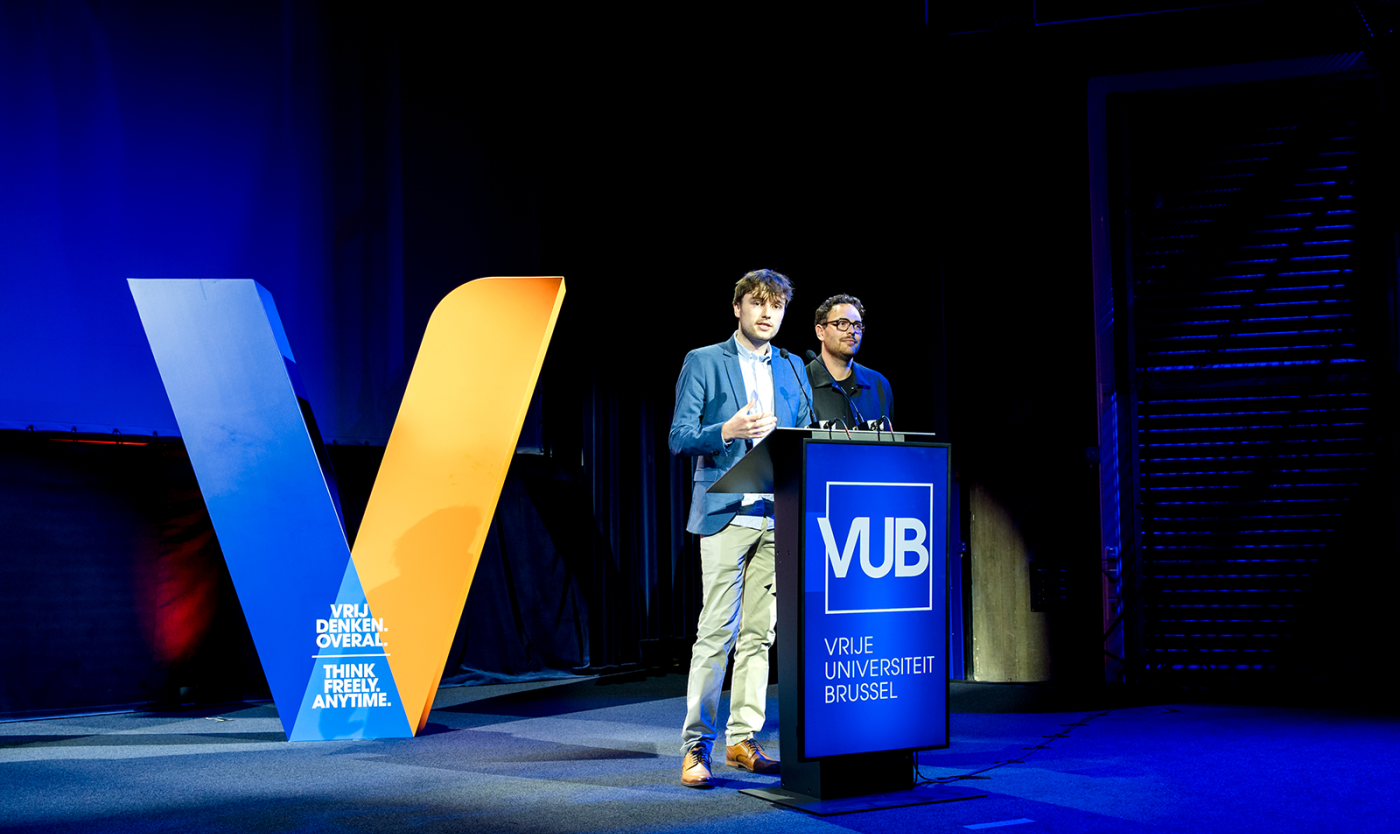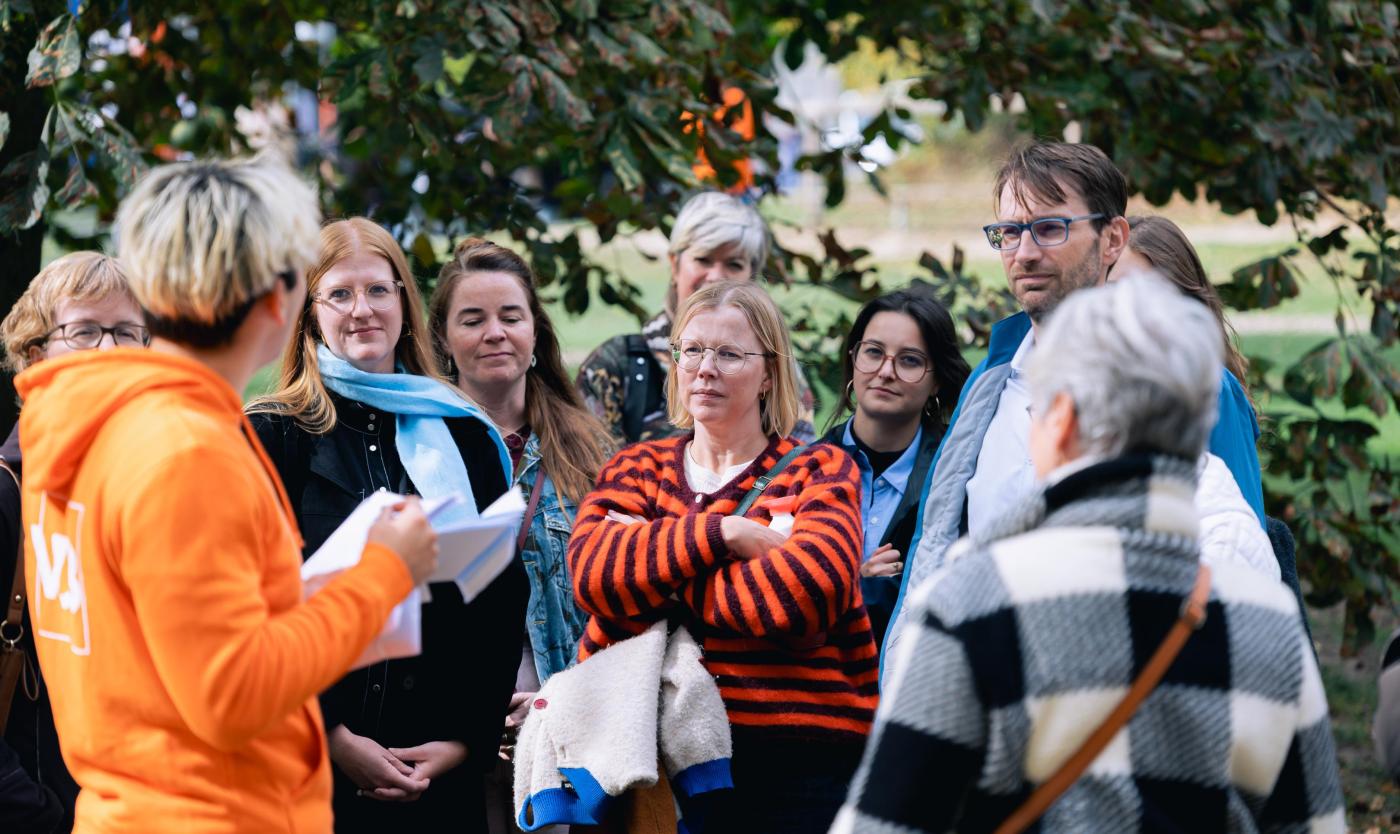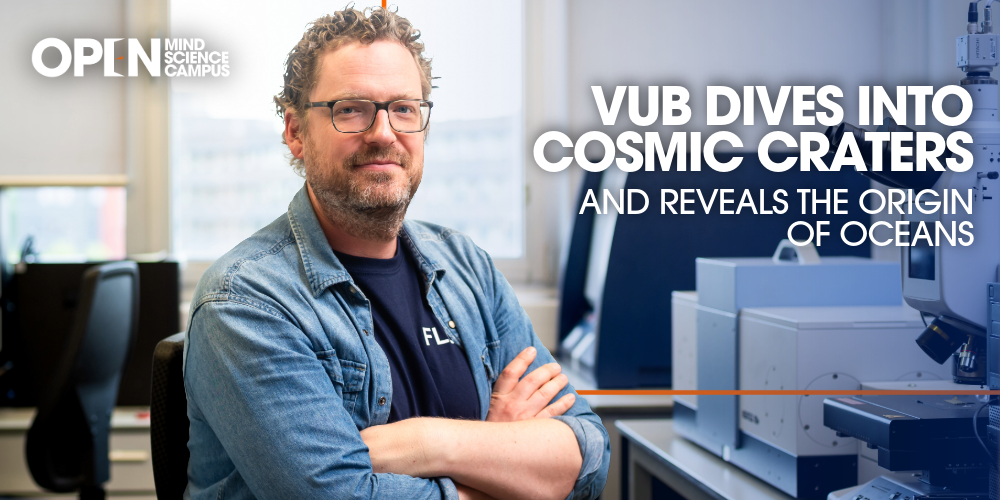
In Mexico, the asteroid that wiped out the dinosaurs struck the Earth. Scientists from the AMGC research group (Archaeology, Environmental Changes & Geo-Chemistry) drilled deep into the ground there to collect material, later examined in their laboratory. That lab has recently gained a second clean lab, where extraterrestrial materials can be studied. The group’s mission: to lift the veil on Earth’s past, from the birth of the solar system to the present day.
Want to see inside the renovated VUB labs? Join us at the Academic Opening on 23 September 2025.
The Chicxulub asteroid was more than ten kilometres wide. A true giant. It struck the Yucatán Peninsula in Mexico 66 million years ago, leaving behind a crater 180 kilometres in diameter. The impact hurled so much dust into the sky that sunlight was blocked for decades. Earth was cast into darkness and cooled abruptly. Plants stopped photosynthesising, ecosystems collapsed, and three quarters of all life – including the once-mighty dinosaurs – went extinct. This event is known as the Cretaceous–Palaeogene mass extinction.
We are still learning from the Chicxulub asteroid, explains VUB professor Steven Goderis of AMGC. He is a geochemist and expert in extraterrestrial materials and their role in shaping our planet.
Steven Goderis: “Until a few years ago, people thought the fine dust thrown into the atmosphere contained lots of sulphur from the rocks of Yucatán, along with soot from massive wildfires. Our analyses show it was mainly silicate dust – pulverised and vaporised rock. The particles were so fine that they formed a cloud around Earth that was almost impenetrable to light.”
“Iridium in the clay layer is the fingerprint of the asteroid impact”
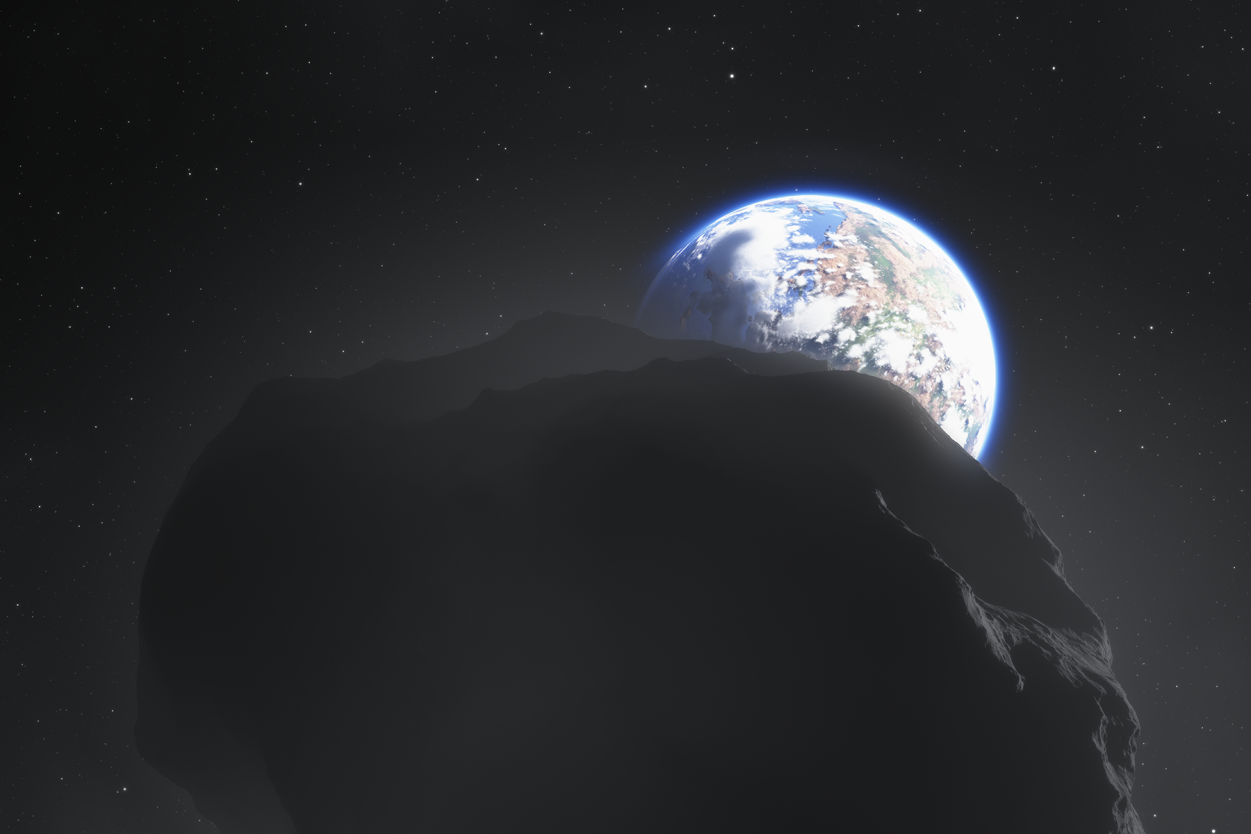
Traces of this global catastrophe can still be found in a thin clay layer that settled worldwide after the Mexican impact. This clay is special: it is rich in iridium, a rare platinum-like metal. The discovery was made by American geologist Walter Alvarez, who later supervised VUB professor Philippe Claeys during his PhD at UC Berkeley.
Steven Goderis: “Iridium is found almost only in Earth’s core – in the mantle and crust it is a thousand times rarer than rare earth elements. But asteroids contain it. A clay layer like this can only form after a major asteroid impact, when dust is blasted high into the atmosphere and later settles worldwide. It is a kind of fingerprint left by the Chicxulub asteroid.”
To measure concentrations of iridium (and other elements), AMGC uses state-of-the-art equipment, funded in part by prestigious ERC Grants. One of their workhorses is the ICP-MS – Inductively Coupled Plasma Mass Spectrometer. This extremely sensitive instrument reveals the elemental composition of samples.
Steven Goderis: “To study a sample, we first dissolve it with strong acids. Heavy metals, rare earths, and trace elements go into solution. This ‘inorganic fraction’ is then evaporated and ionised at 7,000°C in a plasma. The mass spectrometer separates the ions by mass-to-charge ratio, detects the isotopes of each element, and determines their concentrations.”
Complicated? In short: geologists could measure exactly how much iridium that clay layer contained. A huge amount. And the same result appeared in rock layers across the globe – even in the impact crater itself. AMGC concluded that the apocalyptic dust cloud lingered in the atmosphere for up to ten years after impact.
“Jupiter hurled material from the outer solar system towards Earth”
The spectrometer doesn’t just measure concentrations; it also reveals isotope ratios – another kind of fingerprint. These ratios show where space objects come from.
Steven Goderis: “Until recently we didn’t know where the Chicxulub asteroid came from. Now we know it formed in the outer regions of the solar system, beyond the giant planets Jupiter, Saturn, Uranus and Neptune.”
That sounds odd. How could such a distant object end up crashing into Earth? Jupiter is the culprit.
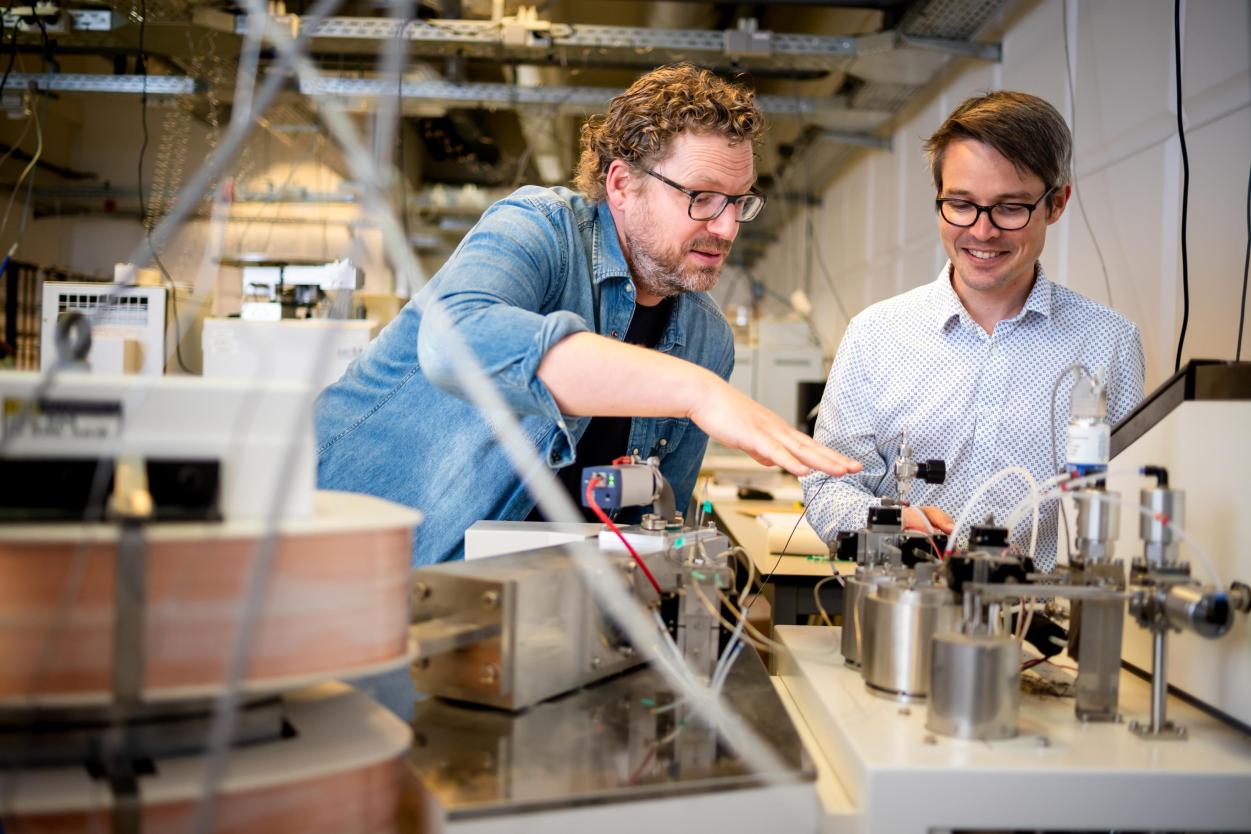
Steven Goderis and Christophe Snoeck
Steven Goderis: “Millions of years after it formed, Jupiter temporarily moved closer to the Sun before migrating to its current position. With its immense gravity, this shift hurled material from the outer solar system inward. Some of it ended up in the asteroid belt between Jupiter and Mars – much closer to Earth. The Chicxulub asteroid was one of those. After a later collision, it was ejected from the belt and eventually smashed into our planet.”
Isotope studies at AMGC, particularly of the platinum-group element ruthenium, revealed this origin. Objects formed in the outer solar system differ chemically and isotopically from those formed closer to the Sun: they contain more carbon, organic material and – crucially – water ice. Water in asteroids? Absolutely.
Steven Goderis: “Recent space missions have sampled three asteroids that regularly pass near Earth. Two of them contained significant amounts of water. This may explain why Earth has oceans. Our planet started out as a hot magma ball. Any volatile elements, including water, were lost. Our hypothesis: Earth’s water arrived later, delivered over millions of years by water-rich asteroids.”
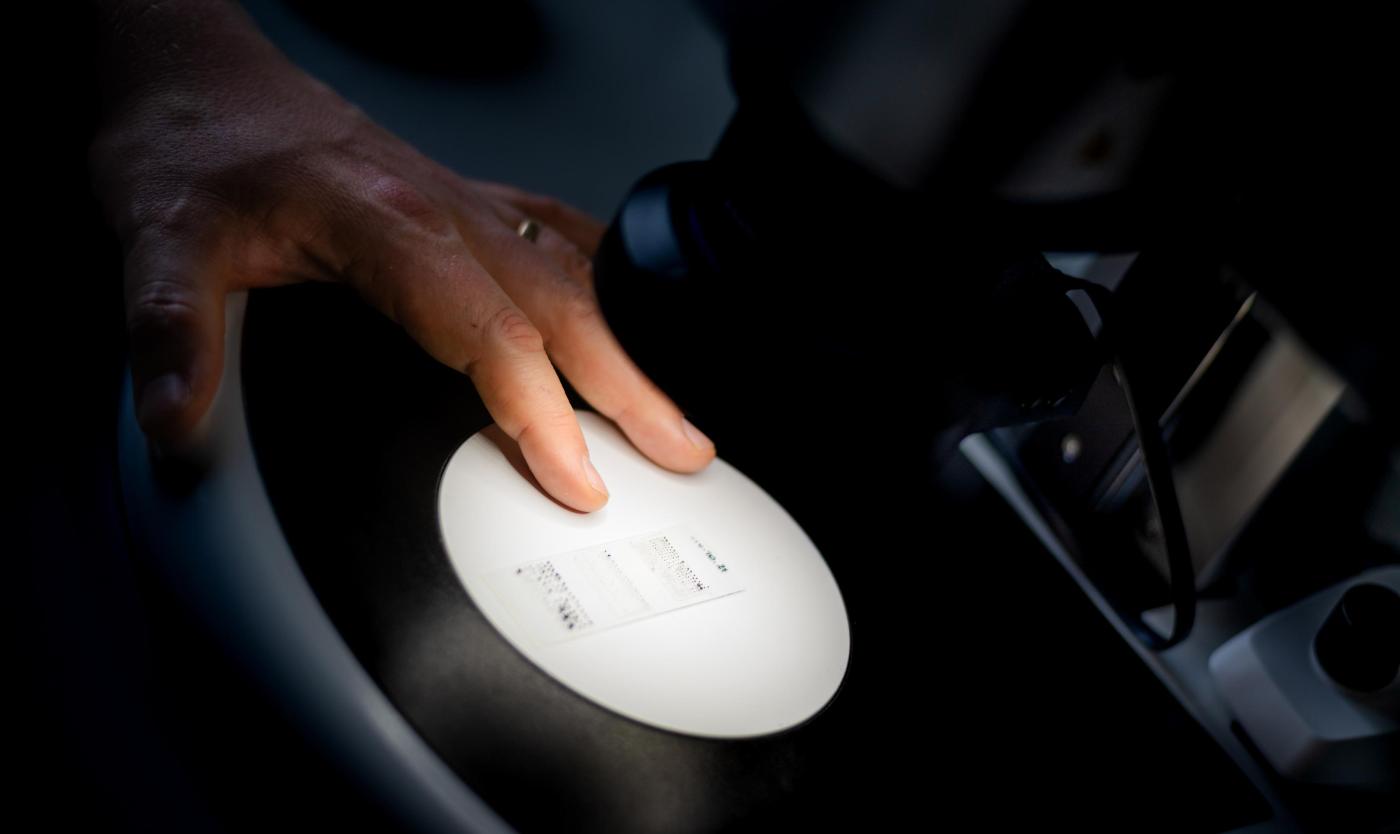
Nowadays, much attention is given to asteroids near Earth, in order to protect our planet from potential impacts, says Steven. “Techniques have been tested to push threatening asteroids onto a different orbit, through the joint NASA-ESA DART/HERA mission. To do this properly, you need to know exactly what each object is made of. A more fragile asteroid, for instance, could shatter under an explosion and rain down as meteorites on Earth. Our strategy will therefore need to be adapted to the type of object we are dealing with.”
An asteroid threatening Earth is nothing new under the sun – so it’s bound to happen again one day. While large objects strike our planet only occasionally, fine dust is constantly entering the atmosphere. On average, that’s about 40,000 tonnes a year, or a hundred tonnes a day – the equivalent of ten fully loaded lorries. The impact of this dust on Earth’s systems is still unclear. Around 470 million years ago, a large asteroid broke apart after colliding in the asteroid belt. This sent not only crater-forming objects and meteorites but also roughly a thousand times more dust than usual towards Earth. That dust may have had dramatic effects on the climate back then, possibly triggering an ice age.
In his new ERC project FLUX, Steven Goderis and his team are investigating how such fine dust has influenced Earth through time. After all, the past tells us a lot about the future. The research group now has two metal-free clean labs. The first was established in 2021 with an ERC Grant awarded to Professor Christophe Snoeck. The second has been operational since June 2025, thanks to an ERC Grant awarded to Steven Goderis.
Steven Goderis: “These clean labs have advanced filtration systems that keep out elements such as lead and zinc. This allows us to create an almost entirely metal-free environment. When measuring the isotopic composition of a meteorite fragment, it’s crucial to avoid any contamination from the outside.”
Philippe Claeys: the man who helped unravel Chicxulub
That VUB continues to play a leading role in Chicxulub research is thanks to professor Philippe Claeys. During his time at UC Berkeley, he completed his PhD on the Chicxulub crater in 1993 under Walter Alvarez – the geologist who discovered iridium in the clay layer and proposed the asteroid extinction theory.
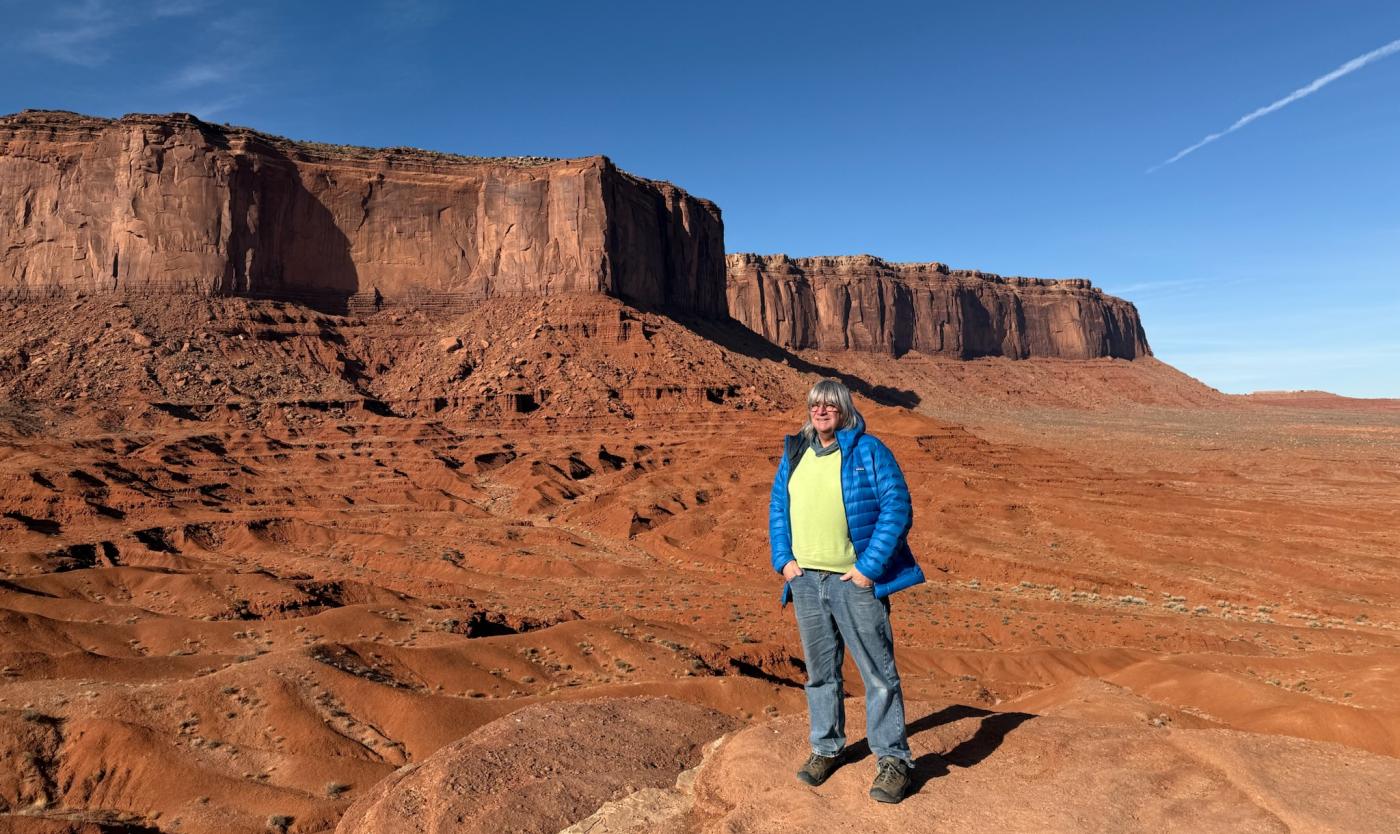
Philippe Claeys
Philippe Claeys: “As a PhD student with Walter Alvarez, I saw the power of collaborating across disciplines. I applied that lesson at VUB by founding AMGC as a transdisciplinary group. Today we are more than a hundred scientists: geologists, chemists, biologists, engineers, anthropologists, archaeologists. Our shared goal is to understand how Earth works as a planet. We study both ancient changes – like solar system formation and meteorite impacts – and present-day ones. We use the same instruments, so it makes sense to share. We make decisions together and seek the best solutions for all.”
Claeys considers this diversity self-evident, though academia often still works in silos.
Philippe Claeys: “That’s a pity. Scientists must take off their blinkers and dare to think differently. VUB gave us the chance to do exactly that. AMGC is proof of how fruitful cross-disciplinary work can be. As a geologist and geochemist, I wanted to understand what archaeologists and anthropologists do – and what we could do for each other. Curiosity and learning each other’s language are the only conditions. It brings fresh ideas and new ways of thinking. I love the gentle art of scientific trespassing. (laughs) And it works: our 2016 drilling expedition in Chicxulub produced a 1.3 km core sample that has already led to over forty scientific publications.”
In 2027, Claeys will retire – reluctantly.
Philippe Claeys: “My mind still works fine and I have much to contribute, but in Belgium you must retire whether you want to or not. Tant pis. Luckily, I can continue as a visiting professor in Canada and China. I’m proud that VUB’s next generation – colleagues like Steven Goderis and Christophe Snoeck – will carry AMGC forward. Its future looks bright.”
A peek inside the labs of VUB scientists?
Join us on 23 September 2025 for the Academic Opening and explore the renewed VUB laboratories
On 23 September, VUB will not only open the new academic year but also the doors of its laboratories. Discover live the technological innovations and scientific breakthroughs our researchers are working on – the very ones that could soon make the headlines.
